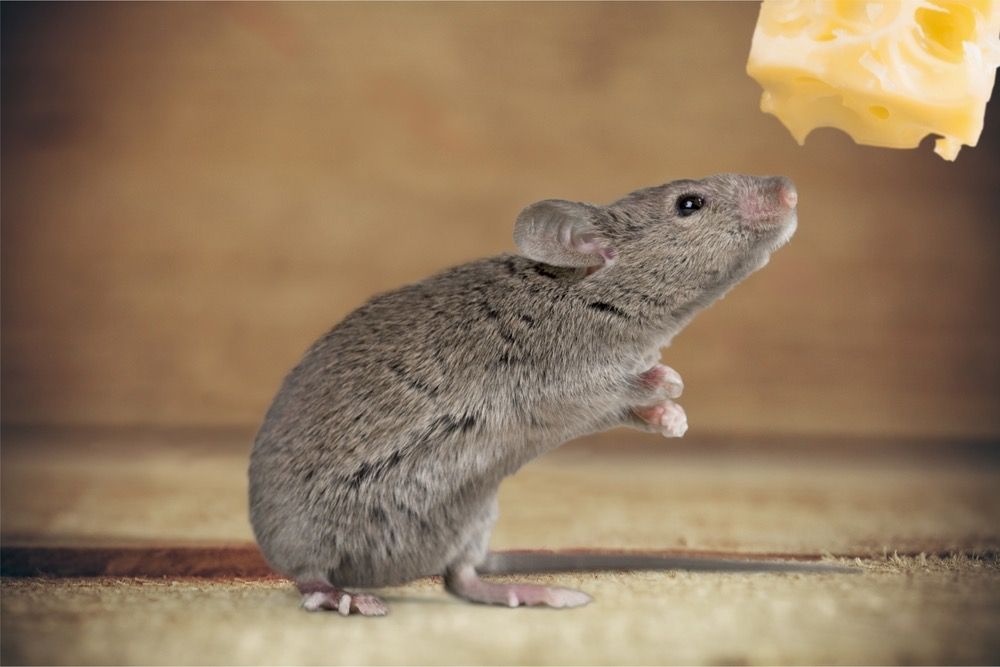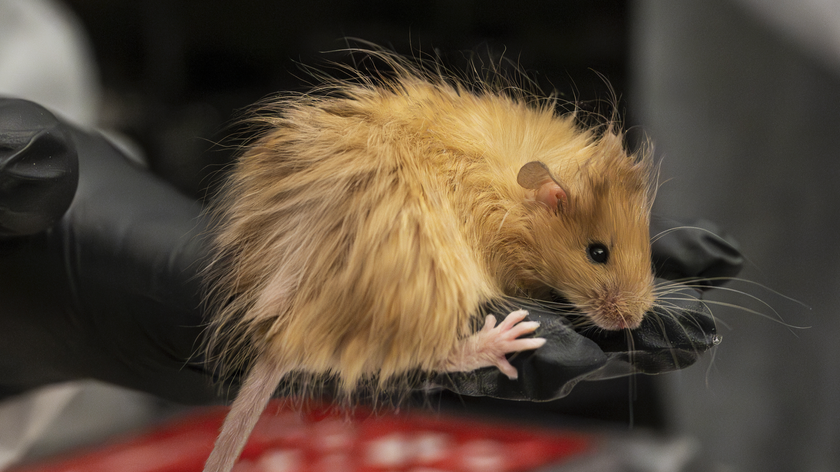Mice Sing Love Songs Like a Jet Engine

Ultra-high pitched mouse squeaks have something in common with the roar of a jet engine. New research finds that the rodents make ultrasound bleeps by creating a small air jet in their windpipes, employing a mechanism previously seen only in jet engines and high-speed subsonic flows.
The ultrasonic whistles are important because rodents use them to sing mating songs and make announcements about their territory. The sounds are too high in frequency to be detected by the human ear.
Until now, though, no one knew exactly how these whistles were produced. Researchers led by biologist Coen Elemans of the University of Southern Denmark used high-speed camera scopes to capture images of the larynxes, or voice boxes, of mice as the animals made their vocalizations. The cameras captured 100,000 frames per second for analysis. [The 12 Weirdest Animal Discoveries Ever]
Two competing hypotheses had been put forward to explain how the ultrasonic vocalizations are made. The first suggested that the sounds are the result of superficial vocal-cord vibrations; essentially, air moves through the vocal cords as it would for any typical vocalization. However, the videos showed that the vocal cords weren't vibrating, even superficially.
The second explanation was that mice make the noises by forcing air through two constricted holes in the larynx, much in the same way a tea kettle whistles when steam forces its way through the kettle's openings. To test this, the researchers surgically removed the upper thyroid tissue in the mouse larynx, trying to find the constrictions. The researchers found that removal of this tissue silenced the ultrasonic vocalizations. They then replaced the tissue with a metal plate and found that the mice could again vocalize, without any sort of second constriction. Thus, the tea kettle theory failed to hold up.
What actually happens, Elemans and his colleagues found, is that a small jet of air originates in the windpipe and flows against the inner wall of the larynx. The air waves bounce back from the wall, traveling upstream into the air jet and creating a feedback loop that creates the whistling sound.
"Interestingly, this mechanism is known only to produce sound in supersonic-flow applications, such as vertical takeoff and landing with jet engines, or high-speed subsonic flows, such as jets for rapid cooling of electrical components and turbines," study researcher Anurag Agarwal of the University of Cambridge said in a statement. "Mice seem to be doing something very complicated and clever to make ultrasound."
Sign up for the Live Science daily newsletter now
Get the world’s most fascinating discoveries delivered straight to your inbox.
Researchers use the rodent whistles (known as ultrasonic vocalizations) to research the genetic and neurological basis for communication disorders like autism and stuttering. As such, this method of sound production is important to understand, the researchers wrote today (Oct. 10) in the journal Current Biology. That's because researchers studying these communication disorders need to be able to understand which sound changes are dependent on neurological function and which are simply the result of anatomy, the authors wrote.
Original article on Live Science.

Stephanie Pappas is a contributing writer for Live Science, covering topics ranging from geoscience to archaeology to the human brain and behavior. She was previously a senior writer for Live Science but is now a freelancer based in Denver, Colorado, and regularly contributes to Scientific American and The Monitor, the monthly magazine of the American Psychological Association. Stephanie received a bachelor's degree in psychology from the University of South Carolina and a graduate certificate in science communication from the University of California, Santa Cruz.











